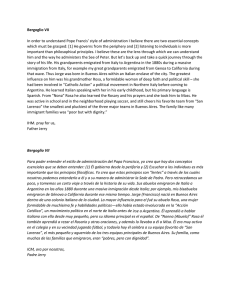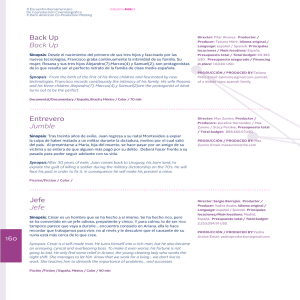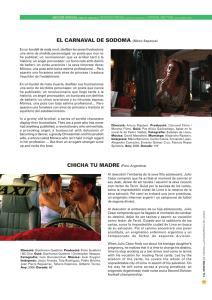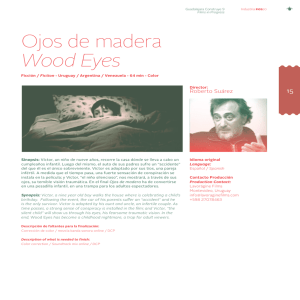Bergoglio XIV Despite his popularity and his “success” in organizing
Anuncio
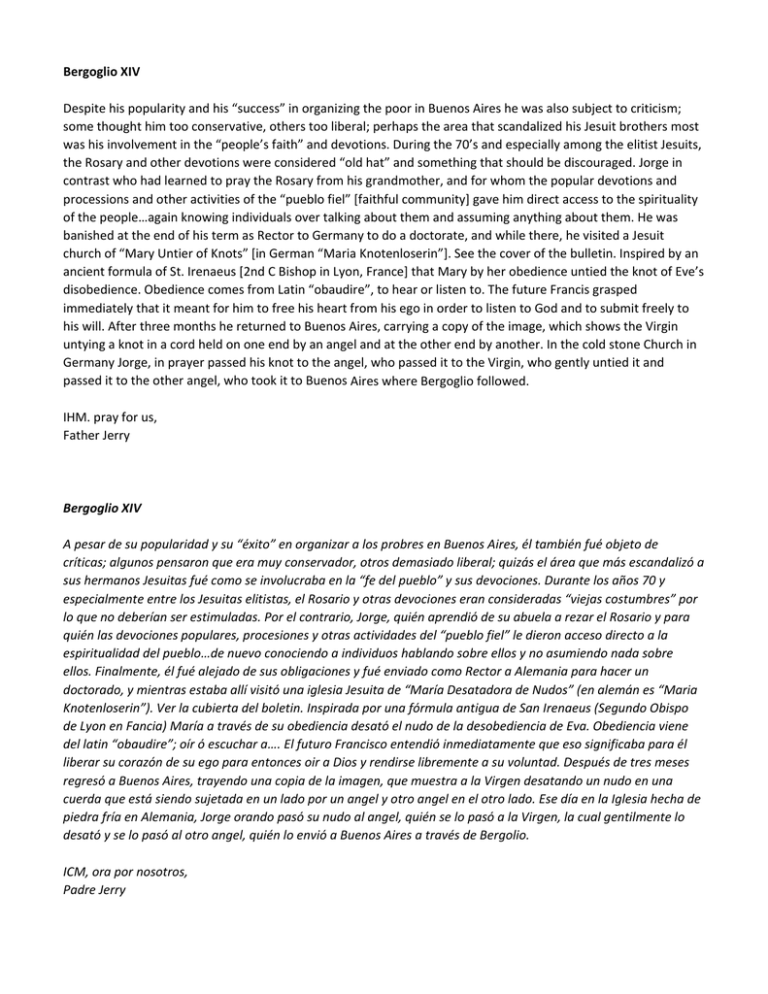
Bergoglio XIV Despite his popularity and his “success” in organizing the poor in Buenos Aires he was also subject to criticism; some thought him too conservative, others too liberal; perhaps the area that scandalized his Jesuit brothers most was his involvement in the “people’s faith” and devotions. During the 70’s and especially among the elitist Jesuits, the Rosary and other devotions were considered “old hat” and something that should be discouraged. Jorge in contrast who had learned to pray the Rosary from his grandmother, and for whom the popular devotions and processions and other activities of the “pueblo fiel” [faithful community] gave him direct access to the spirituality of the people…again knowing individuals over talking about them and assuming anything about them. He was banished at the end of his term as Rector to Germany to do a doctorate, and while there, he visited a Jesuit church of “Mary Untier of Knots” [in German “Maria Knotenloserin”]. See the cover of the bulletin. Inspired by an ancient formula of St. Irenaeus [2nd C Bishop in Lyon, France] that Mary by her obedience untied the knot of Eve’s disobedience. Obedience comes from Latin “obaudire”, to hear or listen to. The future Francis grasped immediately that it meant for him to free his heart from his ego in order to listen to God and to submit freely to his will. After three months he returned to Buenos Aires, carrying a copy of the image, which shows the Virgin untying a knot in a cord held on one end by an angel and at the other end by another. In the cold stone Church in Germany Jorge, in prayer passed his knot to the angel, who passed it to the Virgin, who gently untied it and passed it to the other angel, who took it to Buenos Aires where Bergoglio followed. IHM. pray for us, Father Jerry Bergoglio XIV A pesar de su popularidad y su “éxito” en organizar a los probres en Buenos Aires, él también fué objeto de críticas; algunos pensaron que era muy conservador, otros demasiado liberal; quizás el área que más escandalizó a sus hermanos Jesuitas fué como se involucraba en la “fe del pueblo” y sus devociones. Durante los años 70 y especialmente entre los Jesuitas elitistas, el Rosario y otras devociones eran consideradas “viejas costumbres” por lo que no deberían ser estimuladas. Por el contrario, Jorge, quién aprendió de su abuela a rezar el Rosario y para quién las devociones populares, procesiones y otras actividades del “pueblo fiel” le dieron acceso directo a la espiritualidad del pueblo…de nuevo conociendo a individuos hablando sobre ellos y no asumiendo nada sobre ellos. Finalmente, él fué alejado de sus obligaciones y fué enviado como Rector a Alemania para hacer un doctorado, y mientras estaba allí visitó una iglesia Jesuita de “María Desatadora de Nudos” (en alemán es “Maria Knotenloserin”). Ver la cubierta del boletin. Inspirada por una fórmula antigua de San Irenaeus (Segundo Obispo de Lyon en Fancia) María a través de su obediencia desató el nudo de la desobediencia de Eva. Obediencia viene del latin “obaudire”; oír ó escuchar a…. El futuro Francisco entendió inmediatamente que eso significaba para él liberar su corazón de su ego para entonces oir a Dios y rendirse libremente a su voluntad. Después de tres meses regresó a Buenos Aires, trayendo una copia de la imagen, que muestra a la Virgen desatando un nudo en una cuerda que está siendo sujetada en un lado por un angel y otro angel en el otro lado. Ese día en la Iglesia hecha de piedra fría en Alemania, Jorge orando pasó su nudo al angel, quién se lo pasó a la Virgen, la cual gentilmente lo desató y se lo pasó al otro angel, quién lo envió a Buenos Aires a través de Bergolio. ICM, ora por nosotros, Padre Jerry
